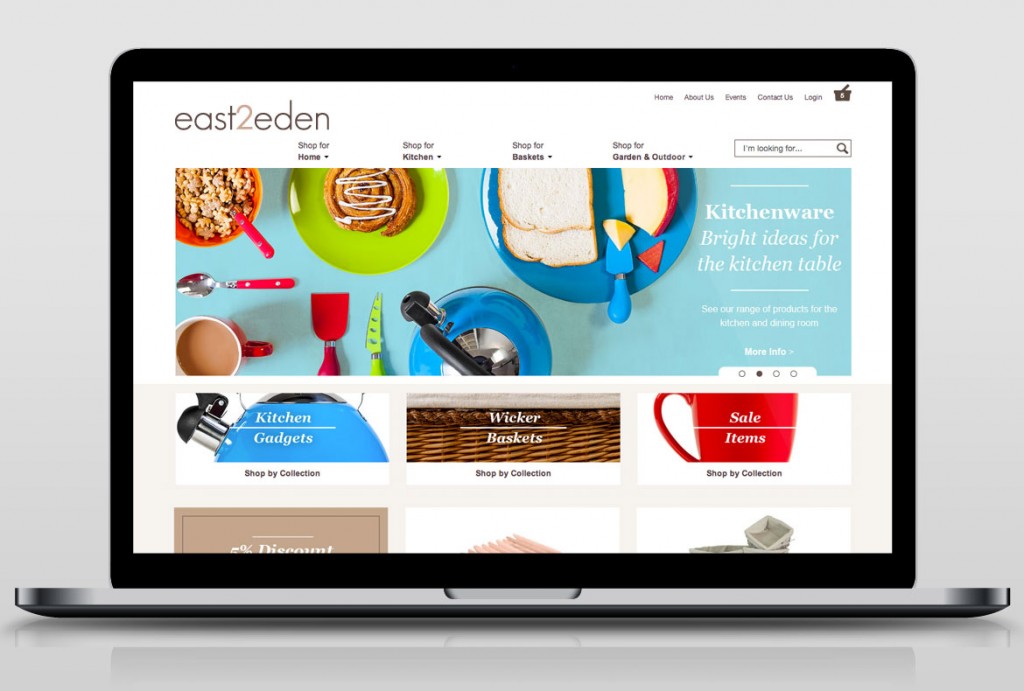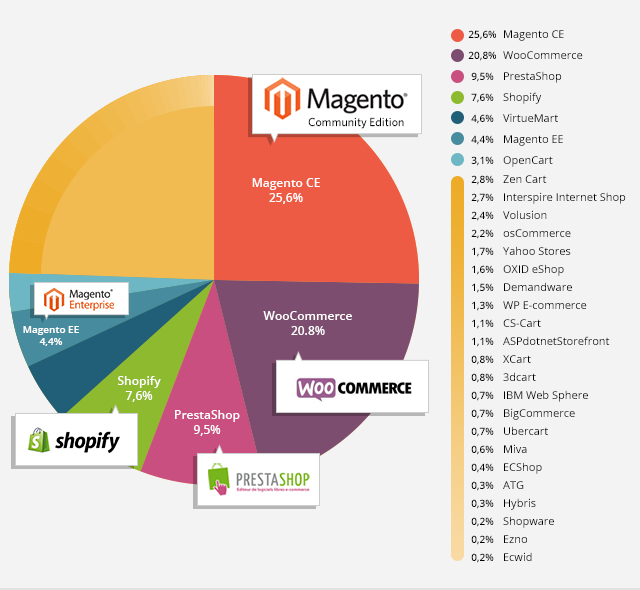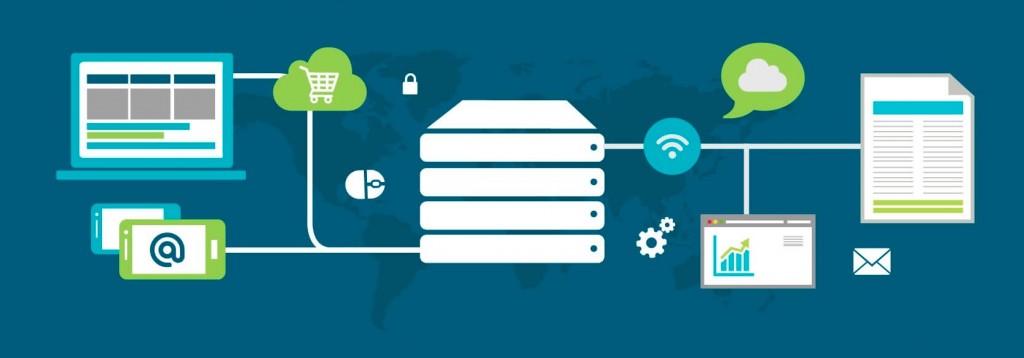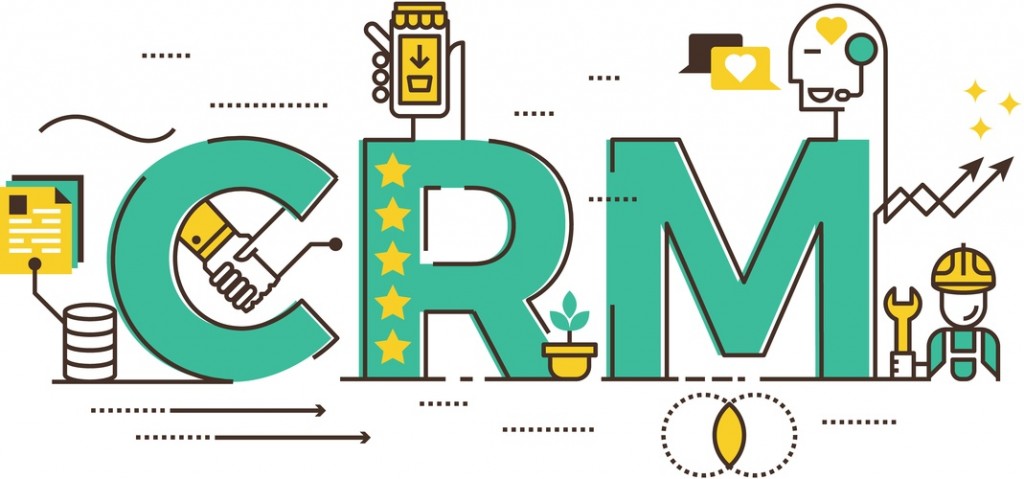
05 Dec 7 Important Steps in an Ecommerce Website Development Project
The ecommerce industry in India has seen exponential growth over the last few years and even though there have been bumps in between, it has always bounced back. This trend is expected to continue, and the industry, valued at $14.5 billion in 2016, is expected to touch a whopping $85 billion by 2020.
This makes ecommerce very attractive to entrepreneurs and retailers in India, and the relative ease of getting started and setting up operations of an ecommerce business means we’re seeing the birth of new ecommerce websites every day.
But running a successful ecommerce business isn’t just about having a great idea and being at the right place at the right time.
Yes, those things matter too, but without hard and focused work, and a thorough business plan, it’s hard to get the business off the ground.
We’re breaking down the process of an ecommerce website development project into 7 major steps, each filled with detail and tips to help you understand the process and get it right.
Identify the product/service, and the customer

“When ecommerce an exciting new thing, entrepreneurs were excited to get online, even without knowing what they wanted to sell. But the products were all restricted to mainstream B2C, and items that provided ease of doing business.
That’s changed now. Even niche businesses see the advantages of getting online, now that ecommerce business processes are better established.”
Indeed, one can find ecommerce portals for a variety of businesses today, from school uniforms to medical equipment, and craft supplies to construction material.
If you are still in the process of identifying products to sell, keep the following points in mind in order to choose well:
- It’s a crowded market, so it helps to go niche, but not so niche that there isn’t sufficient demand
- Consider the price of the product—items that are priced very low will make it difficult for you to get returns, but it also is difficult for people to purchase high-value items without seeing them first
- Availability of the product and convenience can help a customer decide whether to shop online or offline. Items that are usually not available too easily in stores tend to rack up more sales online.
- Do consider the incidental costs. Perishables, fragile goods, voluminous or large goods all pose shipping challenges and drive up costs.
- Importantly, your enthusiasm for the product you’re selling. As an entrepreneur, you will hit roadblocks and face business challenges, so it is important to be driven about your products and do your best to sell them.
Know your ecommerce customer

It’s vital for any business to understand who their customer is so they can reach out to him/her in the best way possible. One way to ascertain this is by evaluating the customers of your competitors. Some parameters to keep in mind are:
- Establish the demographic i.e. gender, age group, income level, education etc.
- Tap social media to identify the people showing interest in your brand/offering through ‘likes’ and ‘follows’
- Interact with customers through feedback, suggestions and reviews to understand the customer profile better
With the basic questions of what to sell, and whom to sell to answered, it’s time to move to the next stage: the ecommerce website.
Choose the right ecommerce website development platform

An ecommerce platform is a software suite that helps you build your ecommerce store where you make your products available, and where your customers can conduct transactions. Choosing the right ecommerce platform is vital to any online business as it is the very foundation of the business.
To begin with, as the business owner you need to decide whether you’d prefer a self-hosted platform, or a hosted one. While the requirement for both is different, hosted platforms are usually preferred as they usually consist of full-features websites and maintenance plans. This minimizes the scope for error and makes website management much easier.
Even then, there are many platforms to choose from, the most popular include Hybris, Magento, WooCommerce, or Shopify.
When choosing your ecommerce platform, you need to keep your business requirements as well as the features on offer in mind. To help you get going, here’s list of things to consider:
- ERP, CRM, Database compatibility and integration
If you already have a business and are now expanding online, you have preexisting systems and a database. It’s important to ascertain the compatibility of the platform with your existing systems and the ability to integrate them.
Imagine having to shift all the data you have built up over the years, or are working with concurrently, to the new system. To ensure easy integration and prevent downtime during transition, choose a compatible platform. You will probably need professionals to assist you in this, but it is well worth the money and time spent to create a stable online store.
- Scope for ecommerce website customization
Even full-feature platforms like Magento come with set features which may not suit the needs of your business, or you may have requirement for additional capabilities in your web store. Moreover, each business has different requirements, and it’s important for the platform to support these.
One of our clients had a unique requirement—as a seller of books, they had to abide by their country’s laws which allowed them to sell certain books only to people over a specified age. This made it difficult to sell the books online, but the client needed the book to be listed in the online catalogue to make website visitors aware of its availability.
To suit this unique case, the project developers were able to create an additional restricted catalogue on the ecommerce website, where visitors could view the listing, but not purchase the books.
Similarly, grocery ecommerce websites require the capability to list product or size variants, list perishables with unique weight or size measurements, offer features such a shopping lists. Choosing a platform with good scope for customization makes it possible to enable the development of such features and deliver a good customer user experience.
- Payment gateway integration
One of the challenges faced by ecommerce businesses in India is the discomfort with online payments. So it is vital include traditional payment options, such as cash on delivery, along with regular payment options, such as credit and debit card payments and net banking. It has now also become necessary to provide the option of linking to payment wallets.
Your ecommerce platform of choice must support these capabilities.
If you seek international expansion, or cater to customers from various countries, it’s important to incorporate multiple currency options to facilitate payment for overseas customers.
- Robust backend
A good online commerce web store is supported by a robust backend for an organized and easy-to-use admin experience. A high quality platform will provide several admin features such as multiple admin logins, easy changes in inventory, taking stock of orders, and so on.
Ensure you check for this because a good customer UX doesn’t count for much if it isn’t powered by an organized backend.
- Mobile-friendly, or responsive ecommerce
Studies have shown that people are spending more and more time on the mobile phones. While some businesses do choose to build apps to cater to this growing demand, app development requires an investment of time and money.
So responsive ecommerce websites, suitable for viewing on mobile phones, are a great alternative. The importance of a mobile-friendly ecommerce website cannot be ignored as customers do much more than make purchases through their phones. The easy accessibility leads to increasing amounts of time spent browsing on the phone, which often leads more online as well as in-store purchases.
The platform must support a website that is optimized for a mobile-friendly yet rich UX.
- Ecommerce marketing
Do consider the marketing tools offered by the ecommerce platform—some platforms offer integration with analytics tools, social media websites, promotion tools, etc. Once you go live with the webstore, marketing will form a significant path of business growth, so anticipate the needs for these capabilities and choose your platform accordingly.
A handy guide to evaluate ecommerce platforms is Gartner’s Magic Quadrant for digital commerce. The Magic Quadrant assesses platforms and categorizes them as per the performance and growth annually.
Choose the right ecommerce website hosting platform

your choice of server and hosting can make or break your ecommerce business. It determines your website’s accessibility and performance efficiency. It’s imperative to choose quality over costs saving when it comes website hosting and support. The key parameters to consider when zeroing in on an ecommerce host are:
- Speed
Your server should have the capacity to deliver good website speed. This is also dependent on the internet connection speed for your server, so check that too. Providing good speed is vital as not only do customers have little patience for websites that load slowly, but search engines also rank slow-loading websites poorly.
- Uptime
A good way to assess the kind of service you will get from the host is to check recent uptime records of other websites being hosted by the provider. One of the greatest attributes of ecommerce is any time, any place availability and shopping convenience. This is enabled by maximizing uptime, so this is a vital check.
- Support
What kind of support services does your host provide? Some just provide the infrastructure, while some also give managed services that help minimize troubleshooting response time and improve uptime. Sometimes managed services also cover issue management and upgrades.
- Scalability
Choose servers that can adapt to your business needs. This means your website doesn’t go down due to an overload in traffic (as the servers scale up to accommodate increased traffic during peak season or offers), as well and optimizes the costs.
- Security
As an ecommerce website, you accept payments online so the servers must be PCI-DSS compliant. It is also important to ensure data security through secure servers.
Choose the right ecommerce development partner

Shopping for ecommerce tech development partners or ecommerce vendors can be confusing. The market is chockablock with service providers and with each one claiming to offer the very best, it’s hard to ascertain who is genuine. Look out for these following aspects to choose your ecommerce development company wisely:
- Location
Contrary to the popular practice of outsourcing to cheaper locations, it makes plenty of sense to commission ecommerce website development to a local company. With an intensive task like this, that requires regular and deep involvement, it helps to be in located in the same time zone in order to speed up communication and coordination. Losing hours, or even a day, sue to time difference can add significantly to development time and cost.
- Custom development
A great way to ascertain the ecommerce vendor’s level of commitment and quality of output in the interest shown in your business requirements. Each business has unique needs and circumstances, and your ecommerce website and development process must be adapted to suit these needs. A vendor who takes the time to understand your goals, requirements and hurdles, and takes the time to address them is likelier to deliver a website that will be more to your expectations and will fuel business growth.
- Approach to processes
Ecommerce website development is a lengthy and task-intensive project, with goals and hurdles that change along the way. Therefore it is very important to partner with a vendor who follows agile processes that are continuously adapted and improved on the journey to suit the changing needs. Due diligence for quality assurance in processes also helps deliver predictable outcomes and more bang for your buck.
- Scalability
Ecommerce development, especially if it is multichannel or omnichannel, is carried out phase by phase, and the resources needed at every phase differ, especially if timelines have to be met. Choosing an established ecommerce website development partner makes resources available as per need without much delay. This ability to scale up or down as per project needs facilitates smooth development and minimizes the time lost to logistic problems.
Ecommerce website testing – You can never test enough
Upon completion of the website development, or even hand-in-hand with it, the next vital step is ecommerce website testing. Testing checks usability, customer convenience, checks for bugs, and is vital to ensuring a good shopping experience. Testing is usually carried out in various browsers, across platforms, and across devices. Website testing can be manual, or automated, or a combination of the two.
The importance of testing cannot be stressed enough—slow-loading websites, poor navigation, broken links and bugs have been known to cause losses for ecommerce websites as customers leave dissatisfied.
So what is usually checked in the ecommerce website testing process?
- The visitor/customer flow: Each step and page usually taken by the customer on his/her visit is tested, starting from home page to menu, search bar and results, product listing … rught up to payment and checkout, and acknowledgement.
- The functionalities: the pages, the categories, filters, user registration, shopping cart, payment options, shipping options—all features and functions offered are checked for usability.
- Security: Ecommerce website security is vital, not just on the payments page, where customers share sensitive information like card details and address, but also throughout the rest of the website. A secure website encourages trust in users.
- Compatibility: With different browsers, on various platforms, and across devices, as mobile phones and tablets are no longer devices to be ignored when it comes to online shopping.
- Performance and discoverability: To ensure the website load time isn’t too long, catch broken links, check for SEO ranking in search engines.
As to the amount of time that needs to be devoted to testing, various business experts and researchers suggest anything between 25% of development time to continuous testing all through the development stage. You can read these suggestions here and decide what suits your business the best.
Effective marketing

Congratulations! Your website is now live. But how are people to know about it, and how will it attract visitors? One needs to have a marketing plan charted out even before launch, so that as soon you are ready to launch successfully, marketing and promotion can be rolled out. In a crowded market of business owners vying for customers’ attention, it’s easy to get lost or go unnoticed. A well-planned marketing strategy that reaches out to the right audience at the right time and across the right channels can help break through this clutter.
Some of the popular marketing methods used by businesses include:
- Traditional methods: such as flyers, newspaper and magazine ads, etc.
- Email marketing: Work towards building a mailing list. Encourage visitors to your website to leave their email addresses by offering something (a gift/discount) in exchange. Send out emails at periodic intervals (but not so often that you’re blocked), to keep existing as well as potential customers informed of offers, new arrivals, seasonal promotions. When used effectively, email marketing has proved to deliver great results. Case in point: Edible Arrangements, a US-based gifting business, experienced an 8% rise in same-day delivery orders after promoting the service through email marketing.
- Social media marketing: The attention-grabbing nature of social media can be tapped to create recall for your brand as well as turn your followers/customers into advocates for your brand. This is often done by contests or activities requiring respondents to share posts, or tag other people in them, usually in exchange for a gift. Dove, the skin and hair care brand, has used Facebook effectively to build a brand identity that tells stories of women, rather than pushing promotional posts.
- Content marketing: is all about creating shareable information-oriented content in order to attract visitors to your website. Listicles, infographics, memes, blog posts are all examples fo content marketing. These work two-fold: they help attract visitors as well as improve SEO ranking.
- Pay per click: Also called PPC, is different from the above methods of marketing as it requires a monetary investment. These are advertisements displayed to a targeted audience, and you’d pay for them based on impressions of per click on the advertisement. Well planned PPC campaigns do usually yield results, but proceed cautiously to understand and control your spends.
Adapt and grow
Development to going live is a long process, and if your website is up and running successfully by now, it’s a satisfying achievement. Yet, like all business, you cannot sit back and relax. It’s necessary to continuously adapt to changing conditions and stay ahead of competition.
Ecommerce has evolved from websites to multichannel, and then omnichannel. In the recent past, newer features like virtual reality, or augmented reality, or location-based alerts, have changed the level of personalization and convenience offered. Brands that have managed to upgrade quickly and enjoyed continued success.
Upgrade your platform regularly to keep your website running smoothly and offer up-to-date features. Periodically check for security updates and implement them.
Track customer browsing habits, purchase patterns, cart abandonment, and other user behavior to tweak your offerings and presentation accordingly.
Your ecommerce website and business require nurturing to enjoy healthy growth and deliver long-term returns on your investment.
We’ve outlined the process to help you get going, now it’s time to put in the sweat and blood. All the best!
Partner with OYE Boutique ecommerce website developers for implementation on Magento 2 and Hybris. Send us an email at info@oyeonline.com or call us at +91 98114 20446


No Comments